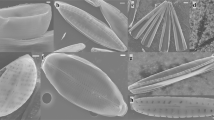Abstract
We studied the effects of food limitation on the population dynamics of the freshwater cyclopoid copepod Diacyclops thomasi in Oneida Lake, New York. In the field population, maximum juvenile abundance coincided seasonally with high phytoflagellate concentration. During the clear-water phase (a seasonal period of low algal density), D. thomasi disappeared from the water column, but fourth-instar copepodids (CIV) were found encysted in developmental arrest in the sediment. Laboratory assays of the effect of the density of two types of food on copepod life history parameters showed that temporal variation in the concentration of relatively small phytoflagellates significantly affected stage-specific development times. This food limitation was most pronounced during the clear-water phase, and supplementation of the diet with a laboratory-cultured phytoflagellate, Chlamydomonas, prevented food limitation. Although developmental arrest appears to be controlled primarily by photoperiod, availability of the larger, more mobile food, Euglena, also influenced the percentage of individuals entering developmental arrest in the laboratory. An investigation of the spatial and temporal emergence pattern in the field revealed that CIV copepodids started to emerge in late autumn and that emergence rates were significantly greater at deep-water locations (9–12 m water depth) compared with shallow-water locations (5–7 m). The clear-water phase in Oneida Lake is an annual event, probably produced by intense grazing by Daphnia pulicaria and Daphnia galeata. Food limitation is thus very likely a recurrent phenomenon for D. thomasi. This apparent seasonal competitive impact of Daphnia on Diacyclops affects both nauplii and immature copepodids. Diacyclops shows two types of responses to the food limitation: (1) the physiological response of slowed active development, and (2) the adaptive response of developmental arrest.
Similar content being viewed by others
Author information
Authors and Affiliations
Additional information
Received: 3 November 1997 / Accepted: 1 March 1998
Rights and permissions
About this article
Cite this article
Hansen, AM., Hairston Jr., N. Food limitation in a wild cyclopoid copepod population: direct and indirect life history responses. Oecologia 115, 320–330 (1998). https://doi.org/10.1007/s004420050523
Issue Date:
DOI: https://doi.org/10.1007/s004420050523




